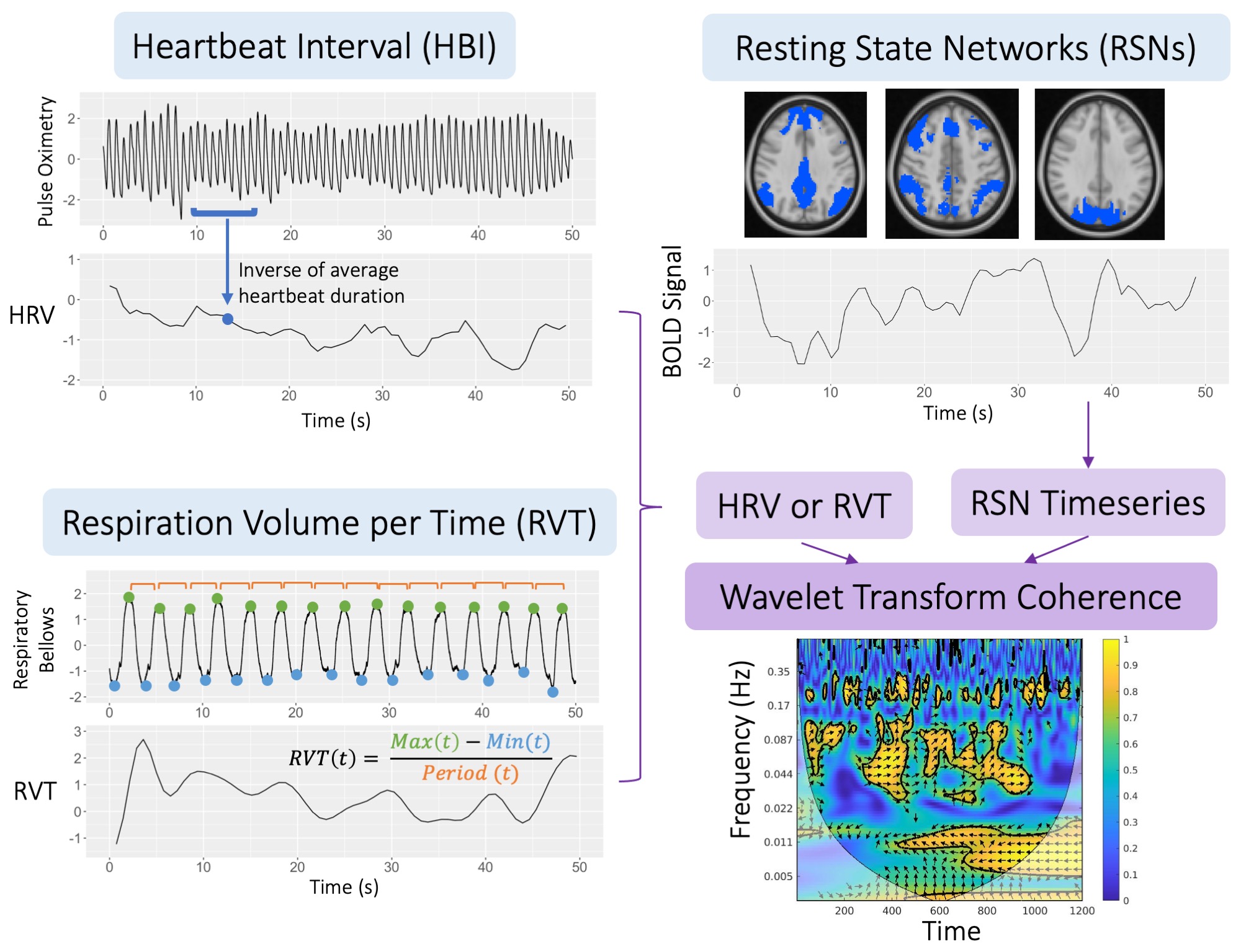Functional Connectivity and Physiology
Synchrony between cardiorespiratory changes, such as heart rate variability or respiration volume per time, and the blood oxygen level dependent (BOLD) signal of resting-state functional MRI (rsfMRI) could be due to autonomic or hemodynamic effects, and the relative contributions of these effects may differ spatially temporally and spectrally. In this study, we characterize these brain-body dynamics using a novel wavelet analysis in rapidly sampled resting-state fMRI data with simultaneous pulse oximetry and respiratory monitoring from the Human Connectome Project. We leverage these temporal and spectral characterizations to tease apart neuronal and vascular contributions to rsfMRI synchrony with systemic physiology, and improve interpretation of BOLD signals.

Functional and physiological netework changes in motor learning. Our research goal is to combine resting state functional MRI with motor paradigms to capture the subtle neural changes of cortico-cerebellar networks that subserve learning mechanisms. We focus on how aging changes amplitude of low frequency fluctuations of the BOLD signal within these networks and the resulting behavioral changes in learning.
